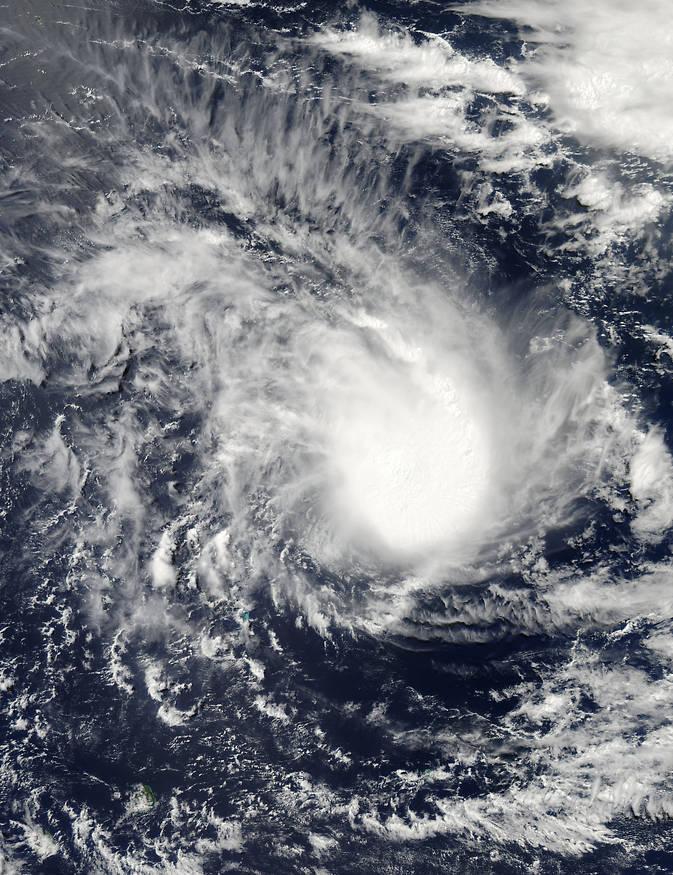NASA sees Tropical Cyclone 22S 'come together right now'

NASA's Aqua satellite captured this visible-light image of Tropical Storm 22S in the Southern India Ocean on April 6 at 09:45 UTC. Credit: NASA Goddard's MODIS Rapid Response Team
The Moderate Resolution Imaging Spectroradiometer or MODIS instrument that flies aboard NASA's Aqua satellite captured a visible image of Tropical Storm 22S as it organized and became a tropical storm on April 6 at 09:45 UTC (5:45 a.m. EDT).
The image was created by the NASA Goddard MODIS Rapid Response Team, at NASA's Goddard Space Flight Center in Greenbelt, Maryland.
The image showed a rounded area of clouds associated with the tropical storm and a band of thunderstorms from the north feeding into the eastern side of the center of circulation.
On April 6, 2015, at 1500 UTC (11 a.m. EDT), Tropical Cyclone 22S' maximum sustained winds were near 45 knots (51.7 mph/83.3 kph).
It was centered near 14.9 south latitude and 61.4 east longitude, about 401 nautical miles (461 miles/ 743 km) northeast of Port Louis, Mauritius. 22S has tracked west-southwestward at 9 knots (10.3 mph/16.6 kph).
22S is moving along the northern edge of a subtropical ridge (elongated area) of high pressure and once that ridge weakens and moves east, the tropical storm will turn to the south and intensify to hurricane-force upon approach to Rodrigues Island.
Rodrigues Island is an outer island in the Republic of Mauritius, located about 350 miles (560 km) east of Mauritius.
Media Contact
All latest news from the category: Earth Sciences
Earth Sciences (also referred to as Geosciences), which deals with basic issues surrounding our planet, plays a vital role in the area of energy and raw materials supply.
Earth Sciences comprises subjects such as geology, geography, geological informatics, paleontology, mineralogy, petrography, crystallography, geophysics, geodesy, glaciology, cartography, photogrammetry, meteorology and seismology, early-warning systems, earthquake research and polar research.
Newest articles

Bringing bio-inspired robots to life
Nebraska researcher Eric Markvicka gets NSF CAREER Award to pursue manufacture of novel materials for soft robotics and stretchable electronics. Engineers are increasingly eager to develop robots that mimic the…

Bella moths use poison to attract mates
Scientists are closer to finding out how. Pyrrolizidine alkaloids are as bitter and toxic as they are hard to pronounce. They’re produced by several different types of plants and are…

AI tool creates ‘synthetic’ images of cells
…for enhanced microscopy analysis. Observing individual cells through microscopes can reveal a range of important cell biological phenomena that frequently play a role in human diseases, but the process of…





















